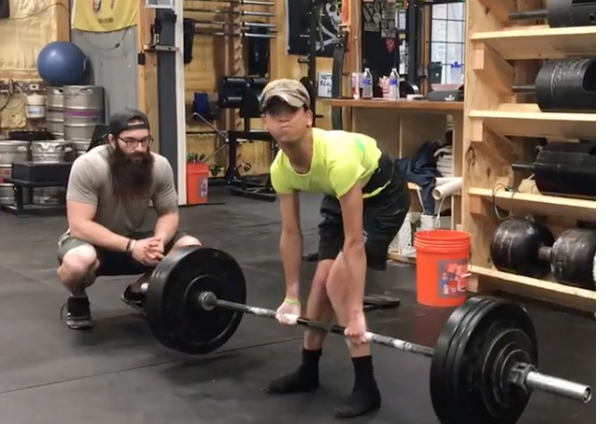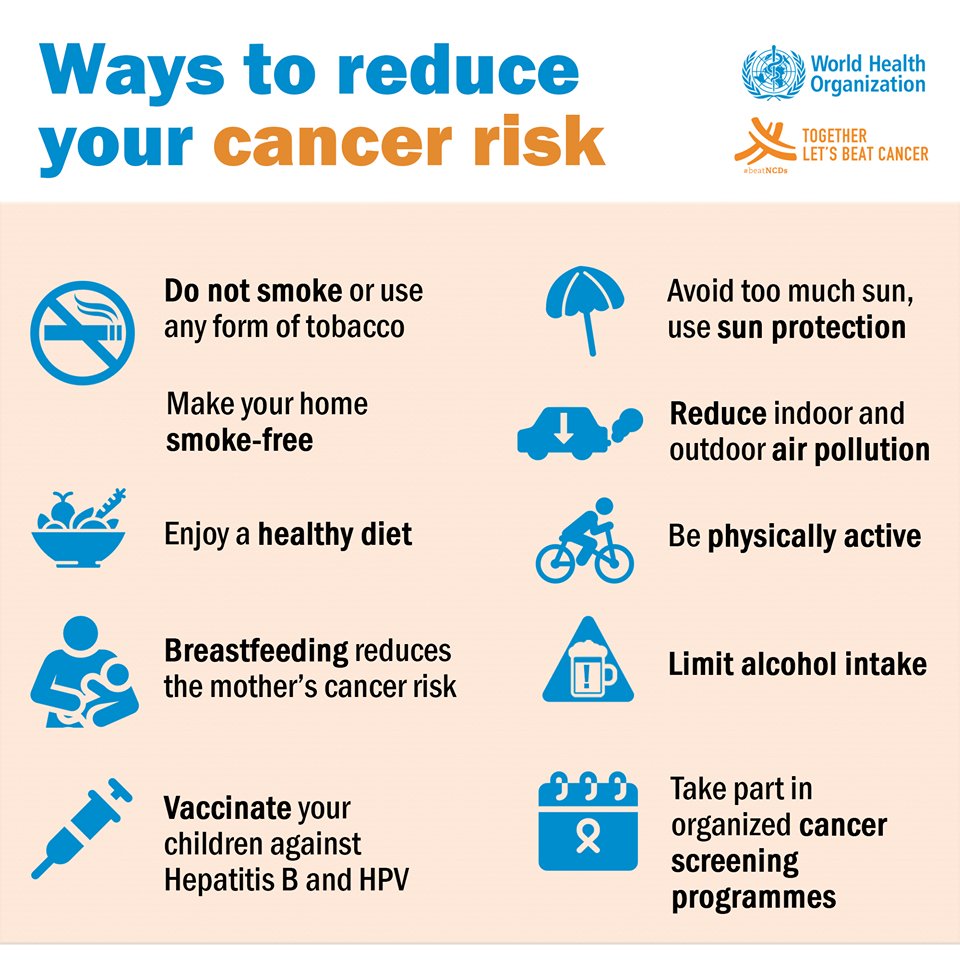This athlete with cerebral palsy just deadlifted 200 pounds … and he only weighs 99.
Monthly Archive for February, 2019
Page 3 of 4
Age is just a number, and though we are helpless to stop the progress of time, we can easily affect the age we feel.
Sit less and move more to age better.

This research showed that it’s better to move 5m each hour of work. The benefits are evident and improve the global wellbeing.
Audrey Bergouignan et al. (2016). Effect of frequent interruptions of prolonged sitting on self-perceived levels of energy, mood, food cravings and cognitive function. International Journal of Behavioral Nutrition and Physical Activity, 13:113
While physical activity has been shown to improve cognitive performance and well-being, office workers are essentially sedentary. We compared the effects of physical activity performed as (i) one bout in the morning or (ii) as microbouts spread out across the day to (iii) a day spent sitting, on mood and energy levels and cognitive function.
Methods
In a randomized crossover trial, 30 sedentary adults completed each of three conditions: 6 h of uninterrupted sitting (SIT), SIT plus 30 min of moderate-intensity treadmill walking in the morning (ONE), and SIT plus six hourly 5-min microbouts of moderate-intensity treadmill walking (MICRO). Self-perceived energy, mood, and appetite were assessed with visual analog scales. Vigor and fatigue were assessed with the Profile of Mood State questionnaire. Cognitive function was measured using a flanker task and the Comprehensive Trail Making Test. Intervention effects were tested using linear mixed models.
Results
Both ONE and MICRO increased self-perceived energy and vigor compared to SIT (p < 0.05 for all). MICRO, but not ONE, improved mood, decreased levels of fatigue and reduced food cravings at the end of the day compared to SIT (p < 0.05 for all). Cognitive function was not significantly affected by condition.
Conclusions
In addition to the beneficial impact of physical activity on levels of energy and vigor, spreading out physical activity throughout the day improved mood, decreased feelings of fatigue and affected appetite. Introducing short bouts of activity during the workday of sedentary office workers is a promising approach to improve overall well-being at work without negatively impacting cognitive performance.
Running flow
Mihaly Csikszentmihalyi, Philip Latter and Christine Weinkauff Duranso
Human Kinetics
2017, pp.189
As long distance runner I know very well the difficulties to maintain the focus on my run, refreshing in the same time the kind of mood which represents the positive background where to design the pleasure to run also when I am mentally and physically tired. So I learned that what happens in those is what Mihaly Csikszentmihalyi has called mental flow, the running flow.
For these reasons, I have been immediately captured by this book, Running flow, written by him with fellow psychologist Christine Weinkauff and running journalist and coach Philip Latter. It’s the first book devoted to this state of mind for runners, to learn how to reach and coach this mind condition and most important how to maintain it during the worst moments. Till some years ago, the flow experiences was studied only in the top level performances and it were described as something which happens spontaneously and difficult to replicate in a voluntary manner. Now we know, that it is something we can train through specific exercises not only to improve our performance but also, and maybe more important, to live more enjoyable experiences through the running.
“Flow refers to an optimal experience during which the mind and body work together while honed on a task. Flow is often associated with peak performance” (p.16). I remember when running 100km Ultramarathon “Il Passatore” I reached the 79°km and in that moment I started to think: “Ok; focus on the light of your lamp in the road, and run till the end.” I have had only this unique thought for the next 21km. For me this has been my flow experience. This is what it’s written in the book when the authors talk about the 9 components of flow (clear goals, challenge-skills balance, unambiguous feedback, focused attention, merging of action and awareness, sense of control, loss of self-consciousness, distortion of time and intrinsic motivation). The first four dimensions represent the flow antecedents and the other six the outcomes of the flow process.
In the book, it’s well explained that the flow state it comes out when the athletes live a condition of optimal self-control associated to an efficient arousal level.
Csikszentmihalyi and his colleagues describe five ways through which one athlete is able to cultivate one’s self into an autotelic person: set goals with a clear and immediate feedback, become immersed in the particular activity, be focused to what is happening in the here and now, learn to enjoy immediate experience and proportion one’s skills to the challenge at hand.
In my opinion the strength of this book is evidently to be applied to one specific sport (long distance running) but the stories of the athletes and the practical information the runners can find to improve their focus and running with this state of mind are absolutely important.
Almost 40 years ago Terry Orlick wrote a chapter titled “From Hero to Zero”: “The challenge is not only in pursuing excellence but in doing so without destroying the rest of your life.” How many top athletes has been committed to pursue this positive goal? That is to say, be aware and committed to distinguish between “my career is the only thing” or “my career is the most important thing I have” or better “my career and my life out of sport are both important.”
Today it seems that many football players in UK do not live following the goal to pursue their personal wellbeing.
- The average career of a footballers is 8 years
- 5 years after the retirement 40% of the players declare bankruptcy
- After 1 year, 33% of footballers get divorced
- Today the average salary in Premiere League is 2,5 millions of pounds, not sufficient to guarantee a happy life
We need to work because the word #Autism is much more related to the words #autonomy and #independent Zac and his mum Nura are a great model! @InsideOutWest @BBCOne
Zak Mohamed, aged 20, has severe autism but his mother Nura is determined that he should learn to live as independently as possible.
She sets him the challenge of learning to go shopping at the supermarket and cook himself a meal – something fraught with difficulties for someone with his condition.
The BBC followed Zak to see how he got on.
You can see more of Zak’s story on Inside Out West on BBC One on Monday at 19:30 GMT, and afterwards on the iPlayer.
Top ten fitness trends for 2019
- Wearable Technology. Wearable technology includes fitness trackers, smart watches, heart rate monitors, and GPS tracking devices.
- Group Training. Group exercise instructors teach, lead, and motivate individuals through intentionally designed, larger, in-person group movement classes (more than five participants, or it would be group personal training).
- High-Intensity Interval Training (HIIT). These exercise programs typically involve short bursts of high-intensity bouts of exercise followed by a short period of rest.
- Fitness Programs for Older Adults. This is a trend that emphasizes and caters to the fitness needs of the Baby Boom and older generations. These individuals in general have more discretionary money than their younger counterparts, and fitness clubs may capitalize on this growing market.
- Bodyweight Training. A combination of variable resistance bodyweight training and neuromotor movements using multiple planes of movement, this program is all about using bodyweight as the training modality.
- Employing Certified Fitness Professionals. The importance of hiring certified health/fitness professionals through educational programs and certification programs that are fully accredited for health/fitness professionals is more important than ever.
- Yoga. Yoga has taken on a variety of forms within the past year (including Power Yoga, Yogilates, yoga in hot environments, and others).
- Personal Training. This trend continues as the profession of personal training becomes more accessible online, in health clubs, in the home, and in worksites that have fitness facilities. Personal training includes fitness testing and goal setting with the trainer working one on one with a client to prescribe workouts specific to each client’s individual needs and goals.
- Functional Fitness Training. This is a trend toward using strength training and other activities/movements to improve balance, coordination, strength, and endurance to improve activities of daily living.
- Exercise is Medicine. Exercise is Medicine (EIM) is a global health initiative that is focused on encouraging primary care physicians and other health care providers to include physical activity assessment and associated treatment recommendations as part of every patient visit, and referring their patients to exercise professionals. In addition, EIM recognizes fitness professionals as part of the health care team in their local communities.
Chunxiao Li et al., (2019).Mindfulness and Athlete Burnout: A Systematic Review and Meta-Analysis. Int. J. Environ. Res. Public Health 2019, 16(3), 449.
This review aims to identify, appraise, and synthesize studies reporting the relationship between mindfulness and athlete burnout and the effects of mindfulness-based interventions (MBIs) on athlete burnout. few variables may account for the relationship between mindfulness and athlete burnout.
Gustafsson et al. (2015) found that mindfulness had an indirect effect on athlete burnout through negative/positive affect. As negative affect has been viewed as an indicator of burnout susceptibility (Lemyre et al. 2006), mindfulness is likely to prevent burnout through adjusting athletes’ affect. Zhang and colleagues (2016) proposed another possible mechanism. They claimed that athletes with high levels of mindfulness tend to have low levels of experiential avoidance (i.e., willingness to avoid negative experience because of the distress brought on by the experience, which may in turn minimize the maladaptive influences of stressors and other negative factors on burnout.








